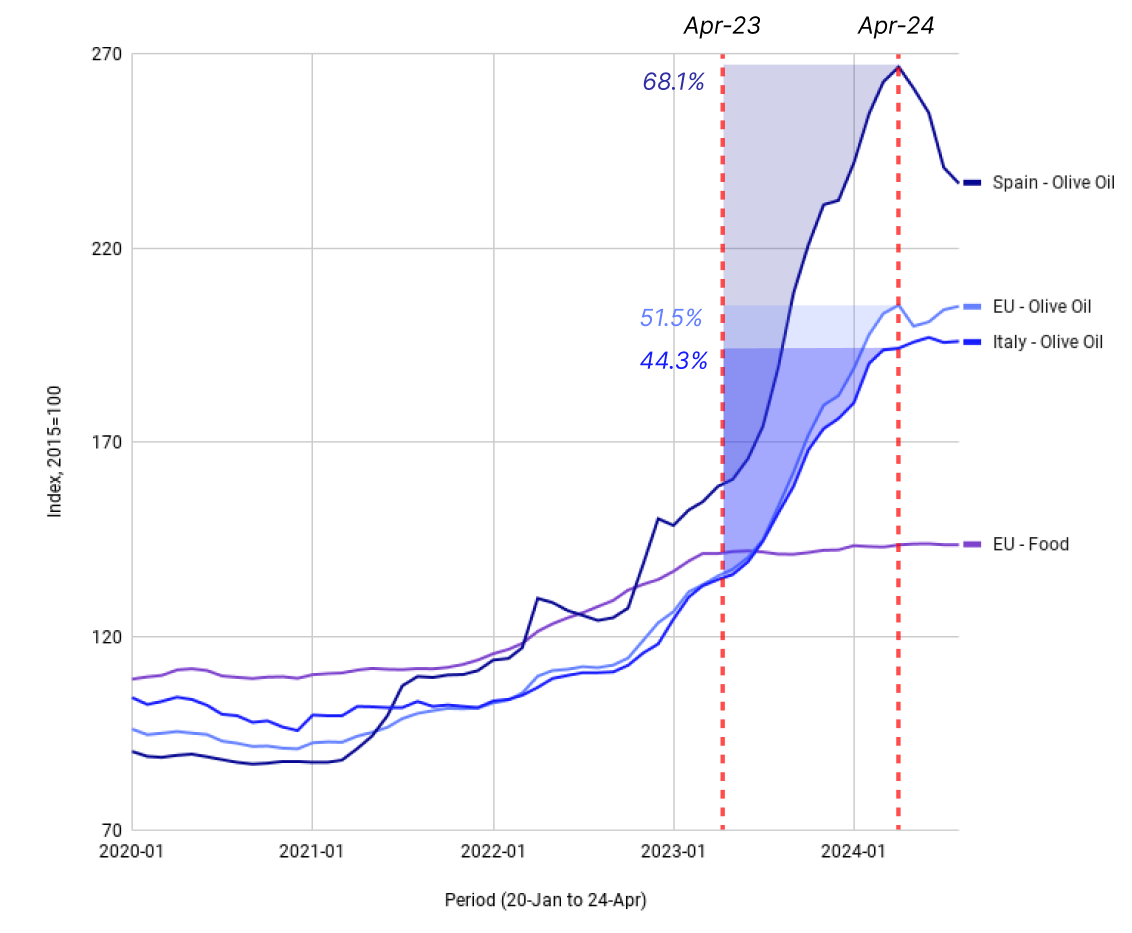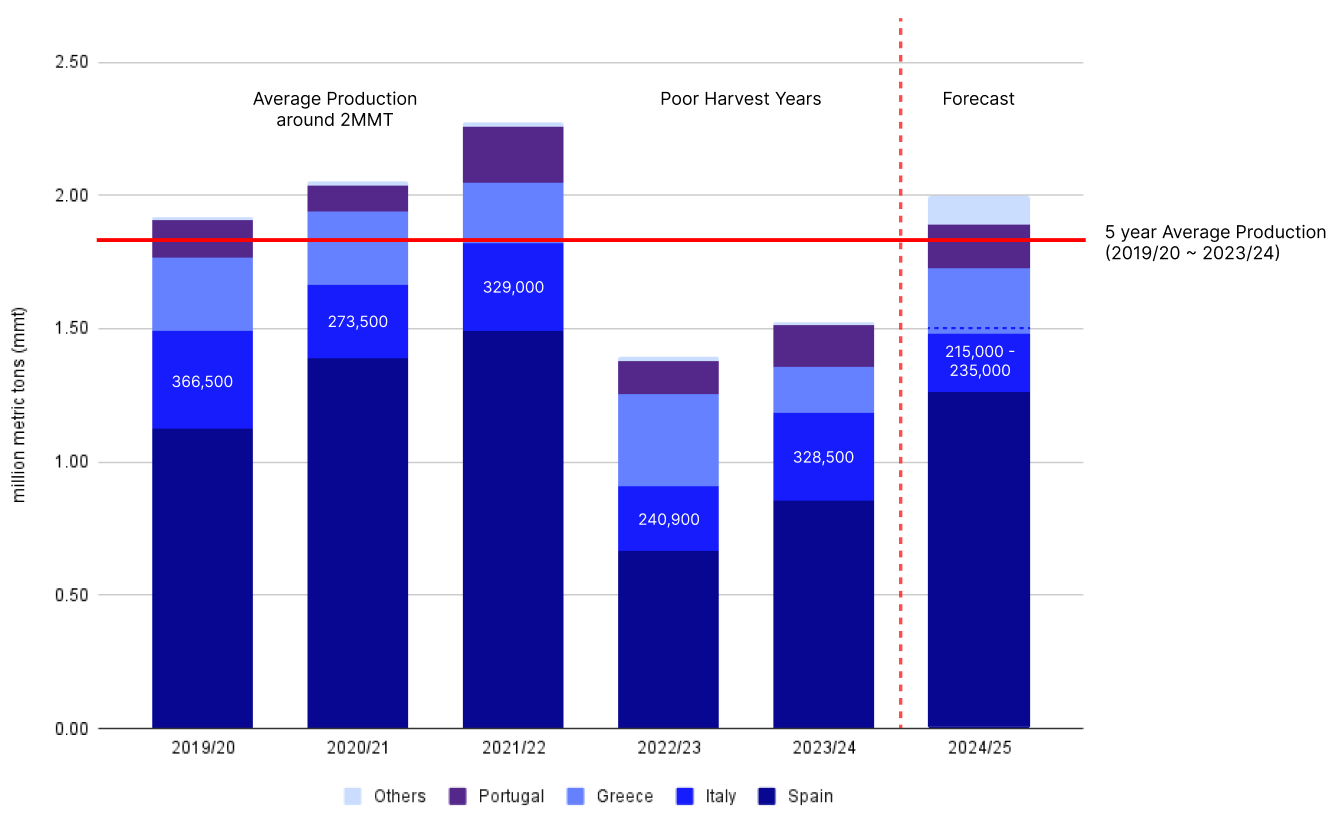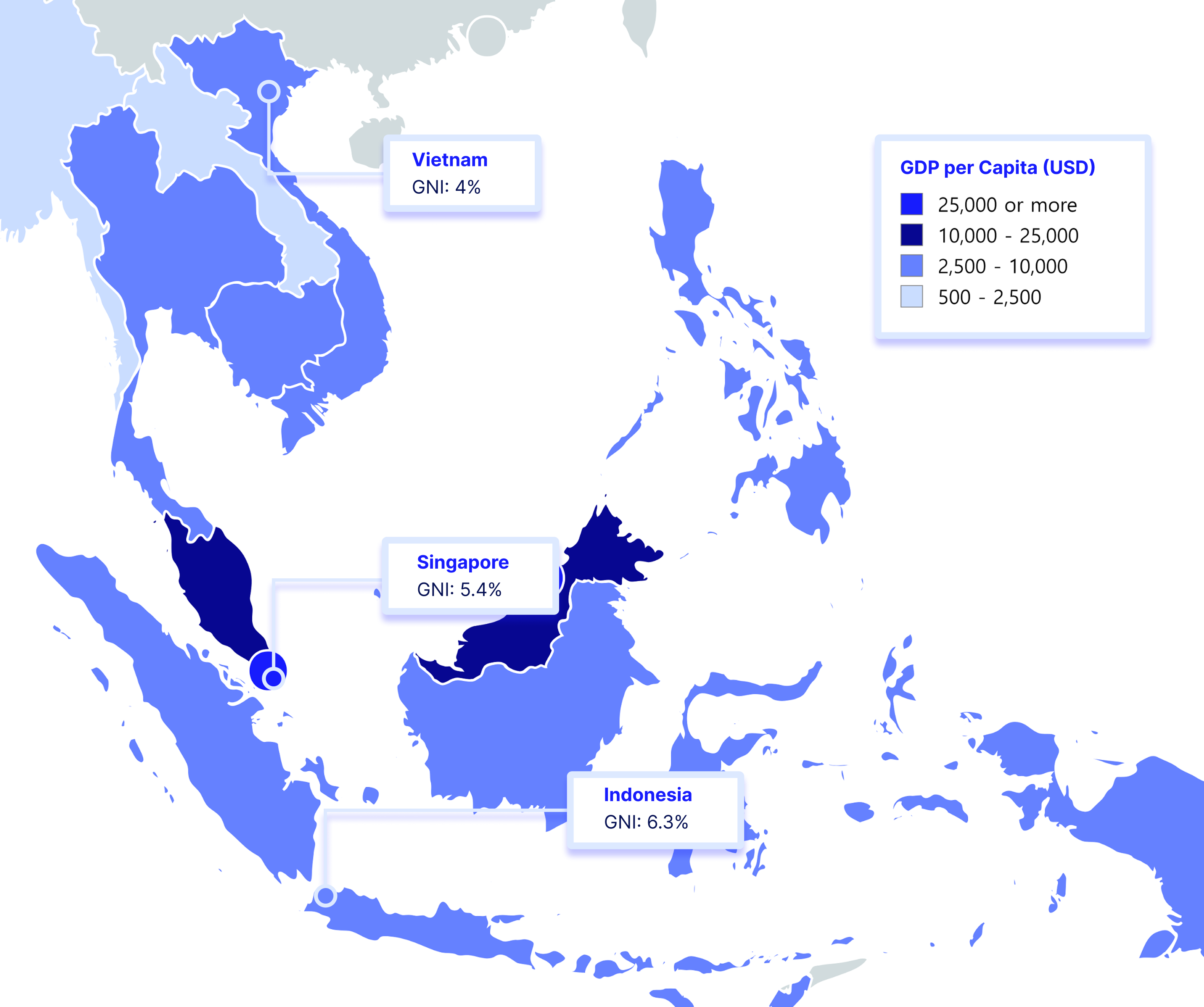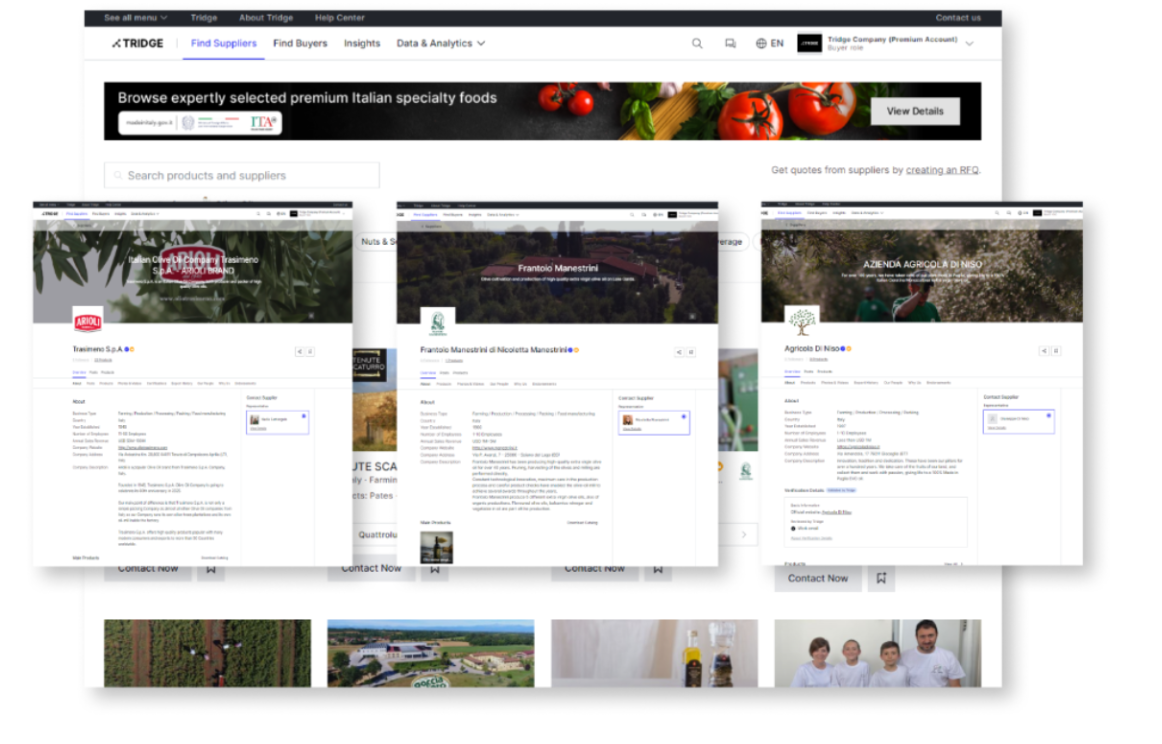Italian Olive Oil: Exploring Established and Emerging Market Opportunities in Asia

EU’s Downward Olive Oil Production and Price Spikes Amid Heatwaves and Drought
Unrelenting heat waves and prolonged drought have resulted in two consecutive years of poor harvests, significantly reducing olive oil production in key producing areas, including Spain, Italy, and Greece.
HICP of Olive Oil (EU, Spain, Italy) and Food (EU

Source: Eurostat, Tridge
An olive oil shortage has consequently contributed to record-high price spikes in the European Union (EU), putting an enormous burden on consumers. According to the European Commission's (EC) Harmonised Index of Consumer Price (HICP), which measures and allows comparison of EU consumer price inflation, olive oil prices have soared drastically in the past few months. Olive oil prices in the EU increased 51.5% year-on-year (YoY) in Apr-24, rising much more sharply than the EU food inflation rate.
Normalizing Production Level
EU and Italy’s Olive Oil Production Forecast in MY 2024/25

Source: European Commission, Tridge
While weather conditions have improved for many EU olive oil producers, extreme heat and drought in Italy have led to water scarcity, damaging much of its harvest. The Institute for Agricultural and Food Market Services (ISMEA) predicts that Italy will produce around 2.15 million metric tons (mmt) to 2.35 mmt of olive oil for MY 2024/25, indicating increased prices and reduced supply of high-quality Italian olive oil for the foreseeable future. Given such circumstances, purchasing managers are recommended to lock-in the purchase volume early on.
Increasing Scarcity of Italian Olive Oil
Despite Italy’s unsteady production and heightened global olive oil prices, many East Asian countries like South Korea have a strong preference and high demand for European olive oil for its quality. According to Tridge, South Korea was the tenth largest import destination for Italian olive oil, importing around USD 33.4 million worth of olive oil in 2023, a 10.6% increase YoY. The reasons for such an increase are as follows:
- Increasing health-conscious consumers: South Korea's increased interest in healthy food options and lifestyles has increased its consumers’ willingness to pay for high-priced, high-quality European olive oil.
- Sensitivity to Social Media Trends: South Korea’s sensitivity to social media has driven food trends that encourage the incorporation of olive oil into Asian cooking, including adding it to vanilla ice cream.
- Gifting culture: South Korea enjoys a tradition of giving gift sets during the holiday season, such as premium beef and fruits, to express appreciation and affection. According to major South Korean retailer E mart, consumers increasingly seek healthy and premium gift sets, including olive oil. Sales of olive oil gift sets during Chuseok (mid-autumn festival) rose by 15% YoY in 2023 and 20% in 2024. These gift sets range from high-end bottles to more affordable options.
Chuseok Olive Oil Gift Sets

Source: E mart
Olive Oil’s Future in Southeast Asia
Southeast Asia is another notable market for Italian suppliers due to their growing Gross Domestic Product (GDP) per capita and increasing Gross National Income (GNI) per capita. With a GDP per capita of USD 88,450, Singapore ranks among the highest in the region. Regarding GNI, Indonesia, Singapore, and Vietnam saw significant growth, with increases of 6.3%, 5.4%, and 4%, respectively.
GDP per Capita and GNI per Capita Annual Growth Rate

*Current Prices in USD
Source: International Monetary Fund, Tridge
Southeast Asia’s rapidly growing economy and rising GNI per capita indicate increasing purchasing power and disposable income, especially on non-essential goods. Consumers have the means to spend more, and their spending patterns are shifting as they prioritize quality, investing in products perceived as healthier or better, including imported olive oil. Thus, this economic growth indicates that consumption and imports of Italian olive oil will increase in the future.
Premium Italian Suppliers
Italy is facing lower-than-expected olive oil production for MY 2024/25, but its strong reputation for high-quality olive oil continues to drive strong demand, especially in South Korea. The economic projection and growing middle class in Southeast Asia also suggest demand growth.
However, the rise in fraudulent olive oil sales, as offenders exploit high Italian prices, makes it challenging to find reputable suppliers.
Thus, to find reputable olive oil Suppliers in Italy, the Italian Trade Agency (ITA) promotes more than 12,000 Italian companies and assists in trade relations.
To contact reputable premium suppliers vetted by the ITA, please visit Tridge.com






